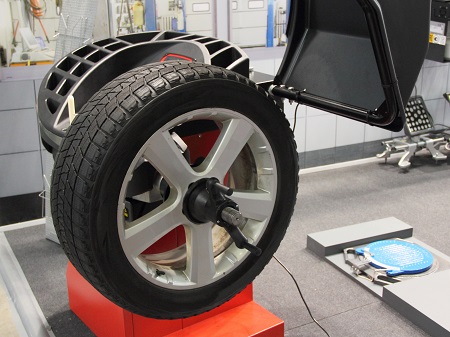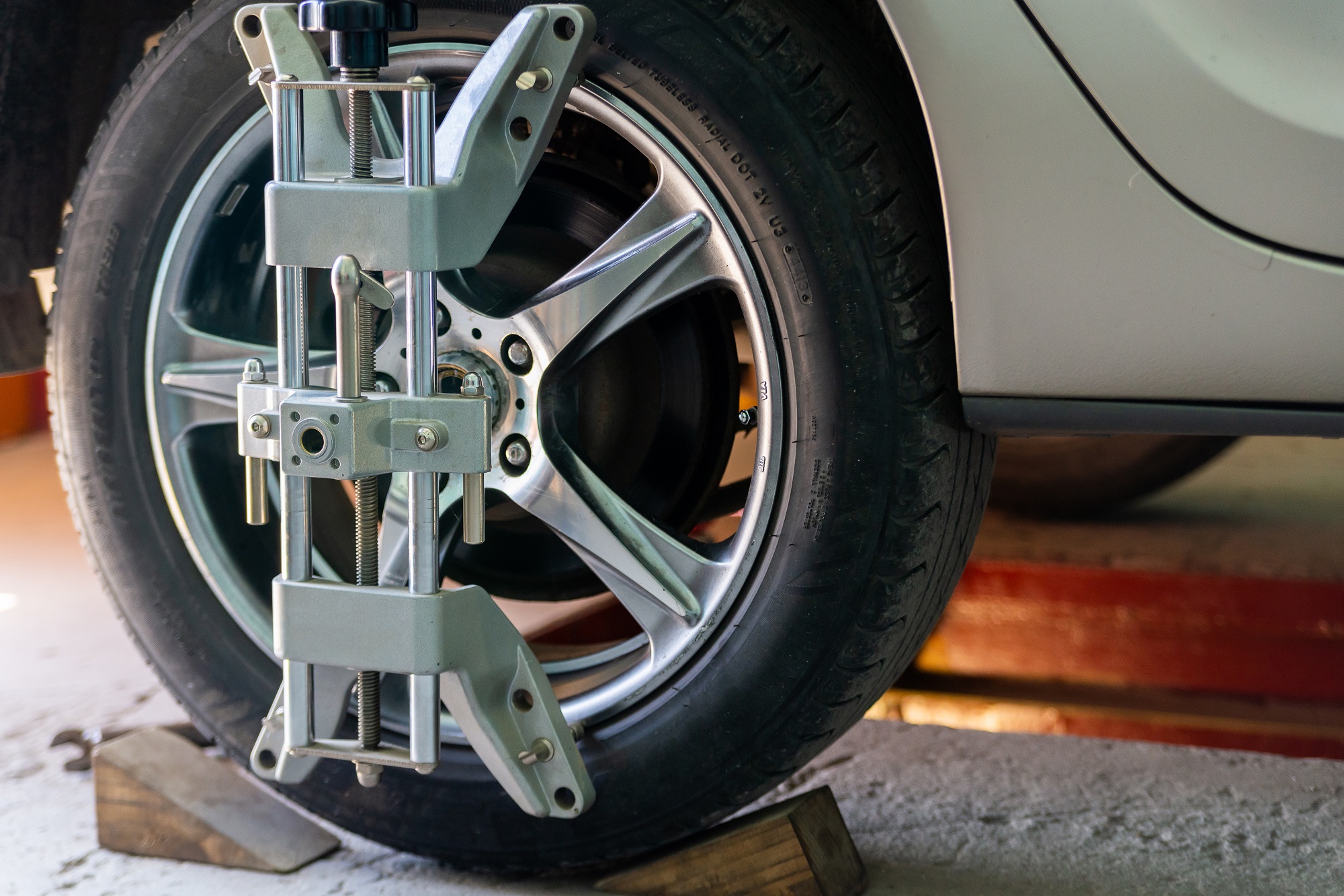You’ve likely heard about wheel alignment and wheel balancing, but do you really know the difference? It’s not just about keeping your ride smooth and straight.
Both are vital for your vehicle’s performance and longevity. Misalignment or imbalance can lead to premature tire wear, reduced fuel efficiency, and even safety issues.
Let’s delve into the technical aspects of these essential vehicle maintenance tasks and understand why they’re not interchangeable.
An experienced auto mechanic can help you with either wheel service you need.
Understanding Wheel Alignment: The Basics
You’re about to delve into the basics of understanding wheel alignment, a crucial aspect of vehicle maintenance. This process ensures that your vehicle’s wheels are set to the car manufacturer’s specifications, aligning them with each other and the vehicle’s body. Misalignment can result from everyday occurrences like hitting a pothole or bumping a curb.
When your wheels are aligned, you’ll notice smoother driving, increased fuel efficiency, and extended tire life. Technicians use three main measurements: camber, caster, and toe. Camber is the inward or outward tilt of the tire when viewed from the front. Caster, seen from the side, is the forward or rearward tilt of the steering axis. Toe describes whether the fronts of the tires are closer or further apart than the rears.
The Importance of Proper Wheel Alignment
It’s crucial to understand the importance of proper wheel alignment, for it not only ensures a smoother drive but also enhances the longevity of your tires. When your wheels aren’t aligned, it results in uneven tire wear, reducing their life expectancy. More so, your car’s fuel efficiency can be affected due to increased friction on the road. Proper alignment, utilizing a systematic approach and precision instruments, rectifies these issues.
Proper alignment is crucial for safer driving. And modern vehicles have very sensitive modules that communicate between the ABS, wheel speed sensors, steering wheel clock spring, ADAS, etc. which are widely affected by your vehicles alignment.
Additionally, misalignment could compromise your car’s suspension system. It’s designed to absorb road shock and provide optimal ride comfort, but misaligned wheels can exert undue stress on it.
Recognizing Signs of Misalignment
Several signs can indicate your wheels might be misaligned, and you shouldn’t ignore them. Misalignment can cause irregular tire wear, affect your fuel consumption, and even compromise your safety on the road.
1. Uneven or Rapid Tire Wear: If you’re seeing uneven wear on your tires or they’re wearing out faster than usual, it’s a clear sign of misalignment.
2. Vehicle Pulling: If your vehicle pulls to one side when you’re driving straight, there might be an alignment issue.
3. Crooked Steering Wheel: If your steering wheel doesn’t center when you’re driving straight, your wheels probably aren’t aligned properly.
4. Vibration while Driving: A vibrating steering wheel, particularly when driving straight, can be a symptom of misalignment.
Recognizing and promptly addressing these signs can save you money and ensure a safer driving experience.
Understanding Wheel Balancing: The Basics

Wheel balancing, on the other hand, is crucial for smooth driving and tire longevity, but don’t assume it’s the same as wheel alignment. Balancing involves correcting any imbalance in your wheels that could lead to vibrations, premature tire wear, and unnecessary strain on your vehicle’s suspension system.
Technicians accomplish this by attaching small weights, fractionally equal to the imbalance detected, to the rims. They use specialized machines to measure the balance, ensuring precision. Unbalanced wheels can cause tires to ‘hop’ or ‘wobble,’ which you’ll likely feel as steering wheel shake or seat and floor vibrations.
Having an expert mechanic regularly check your wheel balance can increase the lifespan of your tires and provide a smoother, safer drive.
The Role of Wheel Balancing in Vehicle Performance
You’re diving into the role of wheel balancing in vehicle performance, and it’s clear that without it, your drive could be rough, and your tires may wear out faster. Here’s why:
1. Vibration Control: Unbalanced wheels can cause vibrations that make your drive uncomfortable. It’s also potentially harmful to your car’s suspension system.
2. Tire Lifespan: Imbalanced wheels can lead to uneven tire wear, reducing their lifespan.
3. Fuel Efficiency: Your vehicle’s fuel efficiency can be negatively affected by wheel imbalance, as your car has to work harder to maintain speed and control.
4. Safety: Lastly, unbalanced wheels can compromise your vehicle’s stability and handling, especially at high speeds, posing a safety risk.
In essence, wheel balancing is critical for optimal vehicle performance, longevity, and safety.
Detecting Issues With Wheel Balance
If you’re noticing a strange vibration when you’re driving, or your tires are wearing out unevenly, it’s likely you’ve got a wheel balance issue. The balance of your wheels is key to maintaining even tire wear and a smooth ride.
Imbalance can be caused by a variety of factors, including normal tire wear, changes in temperature or pressure, or even a small stone caught in the tread. To check for balance issues, take a look at your treads. If they’re wearing faster on the edges than the middle, that’s a sign of underinflation. If the middle is wearing faster, that’s a sign of overinflation. Both can lead to balance issues.
Professional service technicians use precision equipment to balance your wheels, ensuring a smooth and safe ride.
Comparing Wheel Alignment and Wheel Balancing: Key Differences
Let’s dive into the key differences between wheel alignment and wheel balancing, two critical factors you need to consider for optimal vehicle performance.
1. Purpose:
– Wheel alignment corrects the angles of your tires so they’re parallel to each other and perpendicular to the ground.
– On the contrary, wheel balancing equalizes the weight of the combined tire and wheel assembly so it spins smoothly at high speed.
2. Symptoms:
– Misalignment often results in uneven tire wear and a vehicle that pulls to one side.
– Unbalanced wheels cause vibration and premature tire wear.
3. Procedure:
– Alignment involves adjusting suspension components.
– Balancing requires the application of small weights to the wheel to counteract imbalance.
4. Frequency:
– Alignment is typically checked every 2-3 years.
– Balancing is often done more frequently, usually when you get a tire rotation.
Understanding these distinctions helps you maintain your car’s performance and longevity.
Trafton’s Foreign Auto Does Wheel Balancing and Wheel Alignment
At Trafton’s Foreign Auto, we are not only experts in wheel balancing but also in wheel alignment, ensuring your car runs smoothly and safely.
Wheel alignment, a critical aspect of your car’s maintenance service, means adjusting the angles of the wheels so they’re parallel to each other and perpendicular to the ground. This prevents uneven tire wear and ensures straight driving.
Wheel balancing, on the other hand, keeps your car from vibrating at high speeds by evenly distributing the weight around the entire circumference of each wheel-tire assembly.
It’s essential to have both done regularly by ASE-certified technicians like the dedicated team at Trafton’s. From air filter replacements to brake pad upgrades, we have your car covered. Or, if you need a VW or Subaru mechanic, we do work on a variety of different cars.
Trust us for comprehensive routine maintenance. Contact us today for exceptional customer service.
Visit our About Us page for more information about our auto repair shop.

